A group of retired US Air Force generals has issued a rare and urgent appeal to Congress, warning that proposed cuts to combat aircraft procurement threaten deterrence and operational readiness at a time of mounting global tension.
In a 7 July letter signed by 19 retired four-star generals and other senior leaders, the Air & Space Forces Association (AFA) called for full funding of 75 F-35A fighter jets and the reversal of a proposed termination of the E-7 Wedgetail airborne command and control aircraft.
“We write to express our alarm at recent proposals to reduce the next fiscal year’s procurement of F-35As to only 24 aircraft and terminate the E-7 Wedgetail program,” the generals wrote. “These reductions will severely and unnecessarily undermine our service members’ ability to deter, and if necessary, prevail in future conflicts.”
The signatories include former Chiefs of Staff of the Air Force and Supreme Allied Commanders Europe. They argue that the F-35 has proven itself in operations such as Operation Midnight Hammer and Israeli strikes on Iran. “While the F-35 has experienced its share of developmental challenges, operationally it has demonstrated spectacularly its decisive warfighting capabilities in combat over Iran,” the letter stated. They added that the latest upgrade, Tech Refresh 3, “is all but complete” and will significantly improve the aircraft’s performance.
The letter also defends the E-7 Wedgetail against plans to substitute additional E-2 Hawkeye aircraft, arguing the E-2 is not designed for the scale of airborne command and control required in a high-end conflict. “The E-2 is unable to meet the combatant command requirements for theater-wide airborne command and control. That is not the mission for which it is designed,” the generals wrote.
They noted that key US allies including the UK, Australia, South Korea, Turkey and NATO have all committed to the E-7.
With China aiming to develop the capability to assault Taiwan by 2027, the authors warned that decisions made in the current budget cycle could shape the outcome of future conflict. “There will be no more decisive question than who controls the skies over the Pacific,” they wrote. “The actions Congress takes this year, specifically through the acquisition of 75 F-35As and ensuring the operational deployment of the E-7, could be critical in deterring and, if necessary, prevailing in near-term conflicts.”



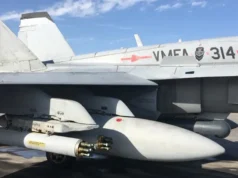

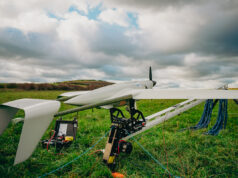
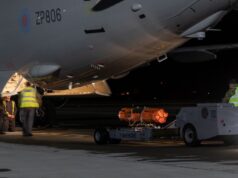
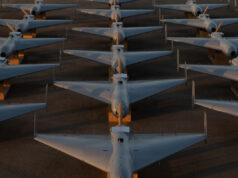
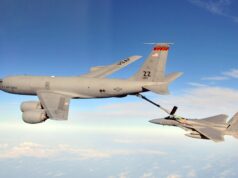
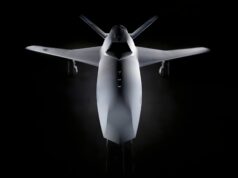

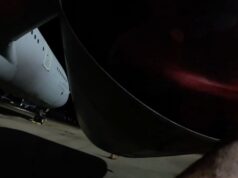
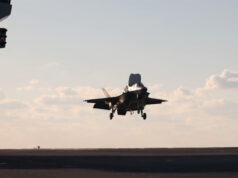

Absolutely correct.
The E7 has up to ten control stations, the E2 has one. The E2 would represent a huge downgrade in capability.
E2 is a good carrier capability. But its old. E7 is on another level for large scale command and control. And despite the F35s development problems. In the US and our own continuing spares and man power issues. You won’t find a single F35 pilot that would want to fly or go to war in anything else. It’s capability extends way beyond the weapons it can deploy. A true force multiplier. With decades of development ahead of it.
A demonstration that the proverbial Sons of USAF Fighter Mafia are hale and hearty, and protecting USAF’s six. Sic ’em, boys!
I have
You have
They have
Glaring grammatical mistakes.
“A group…has”, is correct.
The boat is out on this one 😉
Collective nouns like ‘group’ can take either singular or plural verbs depending on whether the group is being treated as a single unit or as individuals.
If you see the group as one entity, use a singular verb:
‘A group of retired US Air Force generals has issued a rare and urgent appeal to Congress.’
The author has used the correct verb ‘has’ because the group is being treated as a single unit.
Anyway, enough of the red pen for today. It’s too hot, and I want our jet back!!!
#StillDay29
It is a group of individuals – I would go with have; and no, not losing sleep over it – but, the English language can be fun, Nate.
You’re using en dashes (–), which are typically reserved for number ranges or compound modifiers. You should use em dashes (—) for parenthetical or interruptive thoughts.
The semicolon before ‘and no’ is grammatically questionable, as ‘and no, not losing sleep over it’ is a sentence fragment.
‘Not losing sleep over it’ lacks a subject — ‘I’m’ is implied but missing.
There’s also an unnecessary comma after ‘but’:
‘but, the English language…’ should be ‘but the English language…’
Corrected:
It is a group of individuals — so I would go with ‘have.’ And no, I’m not losing sleep over it — but the English language can be fun, Nate.
#Day29
In US English a group or a company always takes the singular, whereas in British English they can take the plural if members of the group are implied.
It’s all grimmer to me 🤮
Ha — don’t get me started on your grammar 😝
On a serious note, grammar shouldn’t come into it at all. It’s about people’s knowledge and opinions.
The red pen had to come out tonight only because the accused — Mr Langford — doesn’t have a right of reply, and the sentence in question was, in fact, grammatically correct.
I still feel there’s another narrative going on. Perhaps it is a conspiracy theory, but only someone with an agenda who is anti the E7 or more probably Boeing, would have voted against it. There is nothing else currently available that has its radar performance and capability! To expect a E2 Hawkeye, even the latest AESA equipped version to fill this gap. Somebody needs to go for a head wobble. As the E2 is a step below what the E7 can provide and is significantly further down the ladder in certain areas.
I think we know who the biggest influence on these decisions was and why, so it will be interesting to see now that he is no longer in Govt if this decision will indeed be reversed on both counts or whether no one is competent enough to bring that necessary reversal about.
Equating E2 and E7 is a joke.
Totally different radar power levels and therefore EW capability.
Then there is design – E2 is for a CBG augmented with naval radars with CEC.
Next issue is operator seats 1 vs 10? Potentially you could probably have more in a big jet?
Then AAR and endurance. E7 is based on a long distance jet which can also do AAR and is being night to have a crew rotation with crew napping in the back with toilets and a galley. So a reasonable workplace.
I have a lot of time for the E2, especially the latest D version with the UHF (300MHz to 1GHz) APY-9 AESA radar. The US Navy and Northrop Grumman have managed to squeeze a significant amount of performance and capability in to a small airframe. However, as I may have mentioned before, the generated radar beam is not the best shape. For maximum performance you really need a circular beam, as more power is concentrated in a smaller area. To get a circular-ish beam from an AESA array, you require the same number of transmitter-receiver modules (TRMS) both vertically and horizontally, it also helps if the array has a circular pattern. But also in general the greater the number of TRMs, the tighter the beam can be.
The APY-9 antenna array is housed in the Hawkeye’s 24ft (7.3m) mechanically rotating dome above the fuselage and the dome is 2.5ft (0.76m) high. As far as I am aware, the dome only has one transmitting array, so not a back to back system like the T45’s Sampson. Which means the wide horizontal number of TRMS and low number of vertical TRMs, will produce a beam very much like a beaver’s tail, but in the vertical plane (not a lot squeezing/shaping the vertical part of the beam).
Northrop Grumman won’t publicly disclose the number of TRMs the Wedgetail’s MESA has per side. But have said the “antenna assembly incorporates 7.3 m long by 2.7 m high Side-Emitting Electronic Manifold array”. This is wider than the E2Ds, but crucially have more TRMs in the vertical plane. Thus be able to produce a more circular beam (still not fully circular).
Having the design constraints of being able to fly off a carrier as well as it must be capable of being housed in the hangar. Does massively limit the size of the aircraft. In theory the MESA radar could fit on to the top of a Hawkeye, but would it fit in the hangar? Though how much of the signal processing would be compromised trying to shoehorn it into the cabin?
Sure but E2 is limited by the physical:-
– frame size; and
– frame power; and
– hangar / lift size; and
– seating capacity…..
When $925b just isn’t enough.
I hope they do.. for the US fighting a war in the western pacific without a strategic AEW@C would be a massive problem.
Especially after they pissed off their pacific Allie’s South Korea and Australia that have E7’s.
Don’t worry though, the weekend guy from Fox News says the satellites will cover it , no one who can do that any push ups could be wrong 🇺🇸🫡
*many push ups
More reason for the UK and NATO to double down on E7 and F35. America seems hell bent on crippling its forces today to fight some sci fi battle in 2050 against a perceived enemy capability that only exists on the internet.
F35 and E7 will be able to dominate in Europe against Russia for decades to come.
The USA did the exact same thing with F22 had way through its final development. Decide it wasn’t the plane of the future, cancel production and move to the next new shiny thing (F35) only to lament that decision for decades to come.
The USAF fleet is really old. F35 is the only game in town for replacement.
I kind of agree with this. America seems desperate to prepare for future wars in decades to come while paying zero regard to the wars they might actually have to fight in the next couple of years.
Did you notice the comment” tech refresh 3 is all but complete”? For who,? The US first, but what about everyone else? How long is the backlog and where about are the UK’s F35Bs in the queue?
Oh what a Fun filled post this was.🤦♂️🤦♂️
Republican Congress can’t find single arse cheek using both hands and a mirror.
America, providing yet another public reason for countries to choose Chinese equipment.
I’d bet real money that China won’t actively crap on its own products in public.
We could do with another couple as well. Probably wont shell out for them though.